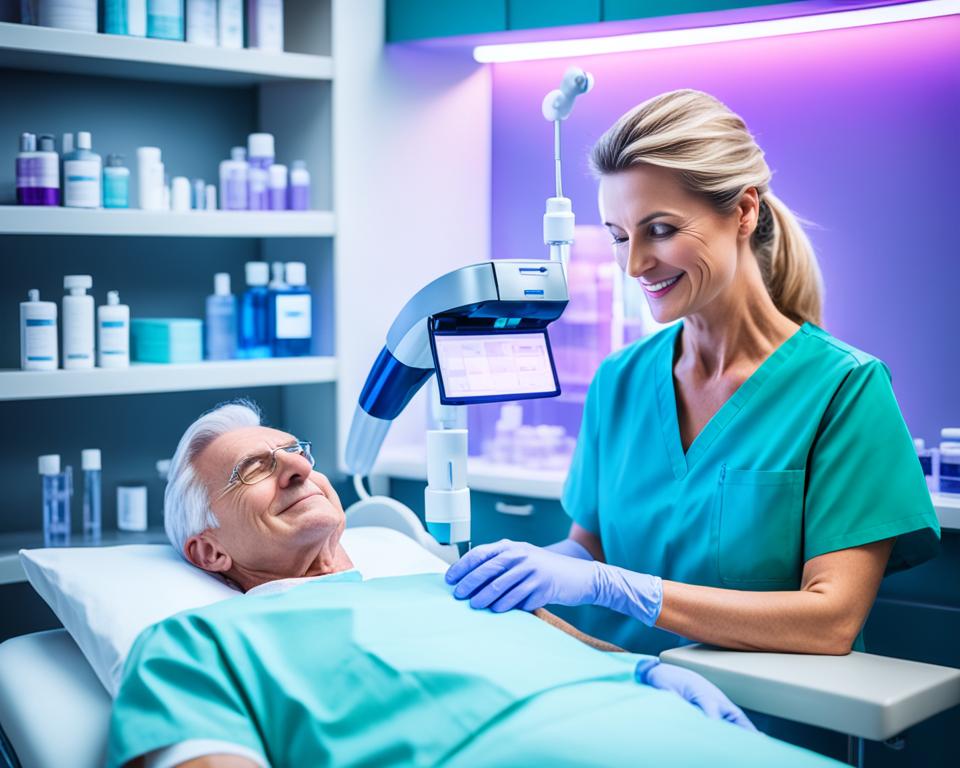Welcome to our article on the fascinating uses of ultraviolet radiation. Ultraviolet (UV) radiation is a type of electromagnetic radiation with wavelengths shorter than visible light. While UV radiation is commonly known for its harmful effects on the skin, it also holds numerous applications in various fields.
Throughout this article, we will delve into the diverse uses of UV radiation, ranging from medical treatments and sanitation to industrial applications and art conservation. By exploring these different areas, we can uncover the significant impact that UV radiation has on our daily lives and various industries.
Key Takeaways:
- UV radiation has numerous applications in medicine, sanitation, food processing, manufacturing, water treatment, air purification, photovoltaics, forensics, and art conservation.
- Medical treatments utilizing UV radiation include phototherapy, sterilization of medical equipment, and disinfection of air and water in healthcare settings.
- UV radiation plays a crucial role in sanitation practices, such as water treatment, air purification, and surface sterilization in public spaces.
- In food processing, UV radiation is used for disinfection, shelf life extension, and contamination reduction.
- Industrial applications of UV radiation include curing adhesives, coatings, and inks, leading to improved efficiency and product quality.
Medical Treatments Utilizing Ultraviolet Radiation
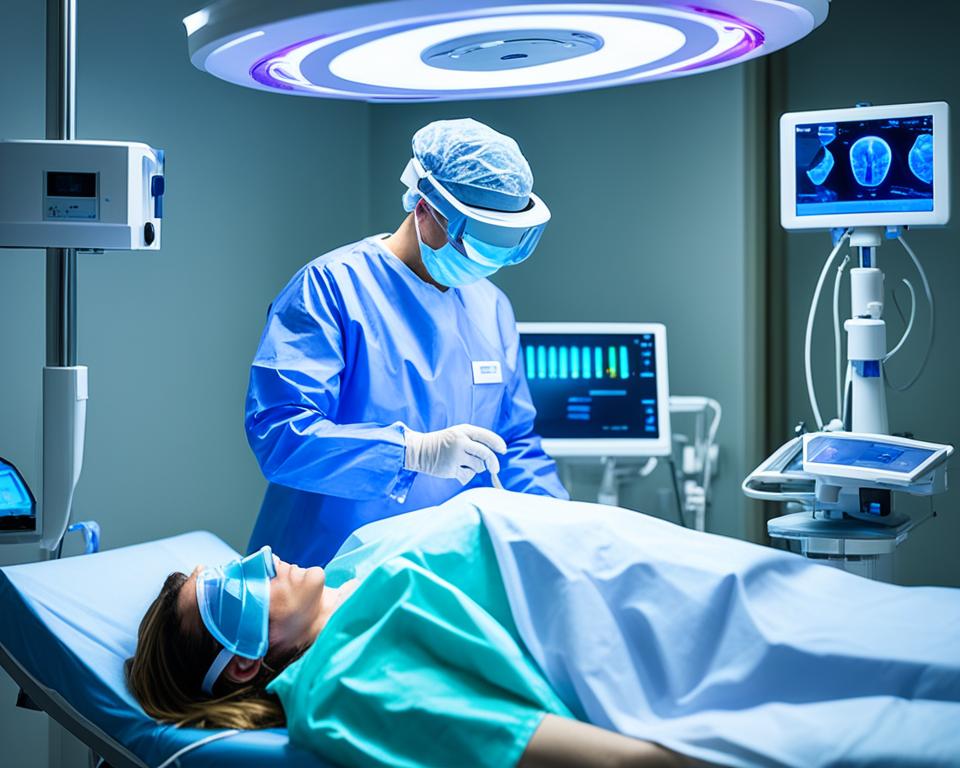
Ultraviolet (UV) radiation has found valuable applications in various medical treatments, harnessing its unique properties to benefit patients and enhance healthcare practices. From promoting skin health to ensuring sterile medical environments, the use of UV radiation in medical settings has proven to be highly effective.
One prominent medical treatment that utilizes UV radiation is phototherapy for skin conditions. By exposing affected areas to controlled doses of UV light, conditions such as psoriasis, vitiligo, and eczema can be effectively managed. UVB light is typically used in these treatments, as it has been shown to suppress the excessive growth of skin cells and facilitate healing.
Additionally, sterilization of medical equipment is a crucial aspect of maintaining a sterile and safe healthcare environment. UV radiation can effectively inactivate a wide range of microorganisms, including bacteria, viruses, and fungi. This method eliminates the need for harsh chemicals and minimizes the risk of cross-contamination in medical settings.
Moreover, UV radiation plays a pivotal role in disinfecting air and water in healthcare facilities. Ultraviolet germicidal irradiation (UVGI) systems are employed to destroy airborne pathogens and eliminate harmful bacteria and viruses from water sources. These systems provide an additional layer of protection against infectious diseases and contribute to a safer healthcare environment.
UV radiation is invaluable in medical treatments, offering targeted solutions for various skin conditions and ensuring the sterilization of medical equipment and healthcare environments.
| Medical Treatments | Description |
|---|---|
| Phototherapy for skin conditions | Exposure to controlled doses of UV light to manage conditions like psoriasis, vitiligo, and eczema. |
| Sterilization of medical equipment | Using UV radiation to inactivate microorganisms on medical instruments, reducing the risk of infection. |
| Disinfection of air and water in healthcare settings | Employing UVGI systems to eliminate airborne pathogens and ensure safe water sources. |
Ultraviolet Radiation in Sanitation and Public Health
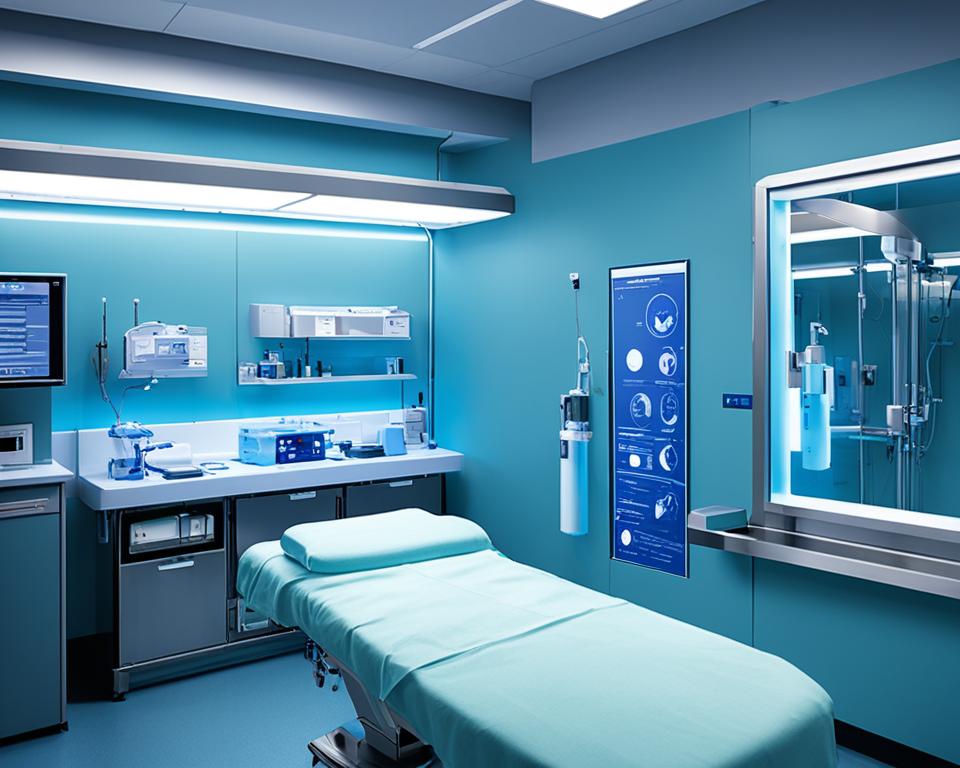
Sanitation practices play a vital role in maintaining public health and preventing the spread of diseases. Ultraviolet radiation has emerged as a powerful tool in this realm, offering efficient and effective solutions for sanitation in various settings. By harnessing the power of UV technology, sanitation practices have been revolutionized, ensuring cleaner environments and safer communities.
One of the key applications of ultraviolet radiation in sanitation is in water treatment. UV radiation is used to disinfect water by inactivating harmful microorganisms such as bacteria, viruses, and protozoa. It provides a chemical-free alternative to traditional water treatment methods, offering a more sustainable and eco-friendly solution.
Furthermore, ultraviolet radiation is employed in air purification systems to eliminate airborne pathogens, allergens, and unpleasant odors. By irradiating the air, UV technology helps create healthier indoor environments, particularly in hospitals, schools, and crowded public spaces where maintaining clean and fresh air is crucial.
In addition to water and air, ultraviolet radiation is also utilized in the sterilization of surfaces in public spaces. Public surfaces, such as elevator buttons, handrails, and doorknobs, can harbor harmful pathogens. UV radiation can effectively eliminate these pathogens, reducing the risk of cross-contamination and promoting public health and safety.
“Ultraviolet radiation has been a game-changer in the field of sanitation and public health,” says Dr. Emily Thompson, a renowned expert in environmental health. “Its ability to quickly and efficiently deactivate various microorganisms makes it an invaluable tool in our efforts to combat infectious diseases.”
Recognizing the significance of ultraviolet radiation in sanitation and public health, numerous industries and institutions have adopted UV technology to enhance their sanitation practices. Below is a table depicting the applications of UV radiation in sanitation and public health:
| Applications of Ultraviolet Radiation in Sanitation |
|---|
| Water treatment |
| Air purification |
| Sterilization of surfaces in public spaces |
As the world continues to prioritize cleanliness and disease prevention, ultraviolet radiation remains at the forefront of sanitation practices. Its ability to provide efficient, chemical-free, and sustainable solutions positions it as a crucial component in promoting public health and ensuring a safer, healthier future.
Ultraviolet Radiation in Food Processing and Preservation

In the realm of food processing and preservation, ultraviolet radiation has emerged as a valuable tool, offering numerous benefits for ensuring food safety and extending shelf life. This section will explore the applications of ultraviolet radiation in the food industry, highlighting its effectiveness in disinfecting food surfaces, protecting against contamination, and promoting longer shelf life.
When it comes to food processing, maintaining cleanliness and preventing the growth of harmful microorganisms is essential. Ultraviolet radiation, specifically in the UVC range (100-280 nm), has proven to be highly effective in eradicating bacteria, viruses, molds, and other pathogens that can compromise food safety. By exposing food products or surfaces to UVC light, the DNA and RNA of microorganisms are damaged, rendering them unable to reproduce or cause harm.
“UVC light has shown great potential in disinfecting food surfaces, reducing the risk of foodborne illnesses, and improving overall food quality.”
Moreover, ultraviolet radiation can help extend the shelf life of perishable foods by inhibiting the growth of spoilage-causing microorganisms. By implementing UVC treatment in food production facilities, manufacturers can minimize the risk of microbial contamination and prolong the freshness of their products. This capability not only reduces food waste but also enhances consumer trust in the safety and quality of the food they consume.
To visualize the effectiveness of ultraviolet radiation in food processing and preservation, consider the following chart:
| Benefits of Ultraviolet Radiation | Examples |
|---|---|
| Disinfection of food surfaces | Elimination of bacteria, viruses, and molds that reside on fruits, vegetables, and food contact surfaces. |
| Extended shelf life | Reduction of spoilage-causing microorganisms, which slows down food deterioration and extends freshness. |
| Contamination prevention | Minimization of microbial contaminants during food production, reducing the risk of foodborne illnesses. |
Combining the advantages of ultraviolet radiation with existing food safety practices presents a comprehensive approach to ensuring the integrity of food throughout the processing and preservation processes. By deploying UVC technology in food production facilities, the risk of microbial contamination can be significantly reduced, leading to safer and longer-lasting food products.
In the next section, we will explore the role of ultraviolet radiation in various industrial applications, highlighting its impact on manufacturing efficiency and product quality.
Ultraviolet Radiation in Industrial Applications

Ultraviolet radiation finds a wide range of industrial applications, contributing to improved manufacturing efficiency and product quality. Its versatile properties make it an invaluable tool in processes such as curing adhesives, coatings, and inks.
Enhanced Manufacturing Efficiency:
- Ultraviolet curing technology allows for rapid and precise curing of adhesives, coatings, and inks. It significantly reduces production time, enabling faster throughput and increased productivity.
- The controlled nature of ultraviolet curing results in consistent and uniform product finishes, reducing the need for rework and ensuring high-quality output.
Improved Product Quality:
- The use of ultraviolet radiation in industrial applications helps in achieving superior bond strength, resulting in durable and long-lasting adhesion of materials.
- Compared to traditional methods, ultraviolet curing eliminates the need for heat or solvents, minimizing the risk of damage to sensitive substrates.
“Ultraviolet curing technology enables efficient and high-quality manufacturing processes, benefiting industries such as automotive, electronics, and packaging.”
Furthermore, ultraviolet radiation offers environmental advantages, as it eliminates the emission of volatile organic compounds (VOCs) associated with conventional curing methods. This aligns with the growing focus on sustainability and eco-friendly practices in industrial operations.
In summary, the utilization of ultraviolet radiation in various industrial applications revolutionizes manufacturing processes, leading to increased efficiency, enhanced product quality, and a more sustainable approach to production.
| Industry | Application |
|---|---|
| Automotive | Ultraviolet curing of adhesives and coatings for a durable finish |
| Electronics | Ultraviolet curing of encapsulation materials for protection |
| Packaging | Ultraviolet curing of inks for vibrant and fast-drying prints |
Ultraviolet Radiation in Water Treatment
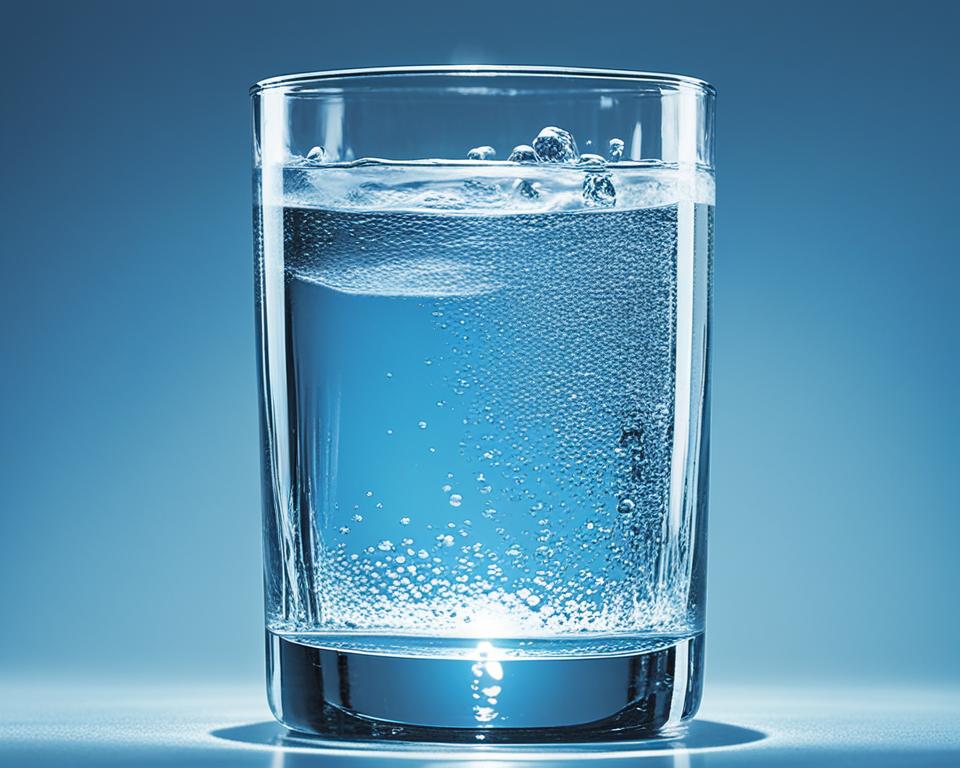
Water treatment is a crucial process to ensure the safety and quality of our drinking water. Ultraviolet (UV) radiation has emerged as a valuable tool in this regard, offering efficient and eco-friendly solutions for disinfection and water purification.
UV radiation works by inactivating microorganisms present in water, such as bacteria, viruses, and parasites. When exposed to UV light, the DNA and RNA of these harmful organisms are altered, rendering them unable to reproduce or cause infections.
Unlike traditional water treatment methods that rely on chemicals like chlorine, UV radiation leaves no harmful byproducts or chemical residues, making it a safe and environmentally-friendly choice. Additionally, UV disinfection is highly effective against chlorine-resistant pathogens, ensuring comprehensive water treatment.
The Benefits of Ultraviolet Radiation in Water Treatment
Let’s take a closer look at the advantages of using UV radiation in water treatment:
- Microorganism Inactivation: UV radiation effectively disables a wide range of microorganisms, including bacteria, viruses, and protozoa, ensuring water safety.
- Algae Control: UV radiation helps control algae growth in water sources, preventing the formation of harmful algal blooms and improving water quality.
- Chemical Reduction: By employing UV disinfection, the usage of chemical disinfectants, such as chlorine, can be reduced, minimizing the formation of disinfection byproducts (DBPs) and their potential health risks.
Incorporating UV radiation into water treatment systems helps protect public health and ensures that communities have access to clean and safe drinking water. The use of UV technology provides an efficient, reliable, and sustainable solution for water treatment.
“UV radiation offers a cutting-edge approach to water treatment, providing superior disinfection capabilities without the drawbacks of traditional methods.”
| Advantages of Ultraviolet Radiation in Water Treatment | Traditional Chemical Disinfection Methods |
|---|---|
| Environmentally friendly | Chemical residues and byproducts |
| No harmful effects on taste and odor | Potential taste and odor issues |
| Safe for human consumption | Potential health risks from disinfection byproducts |
| No formation of chlorine-resistant pathogens | Inefficacy against chlorine-resistant pathogens |
In summary, ultraviolet radiation offers a reliable and efficient solution for water treatment, ensuring the safety and quality of our drinking water. The use of UV technology in water treatment systems provides a sustainable approach that minimizes the reliance on chemicals and promotes a healthier and greener environment.
Ultraviolet Radiation in Air Purification
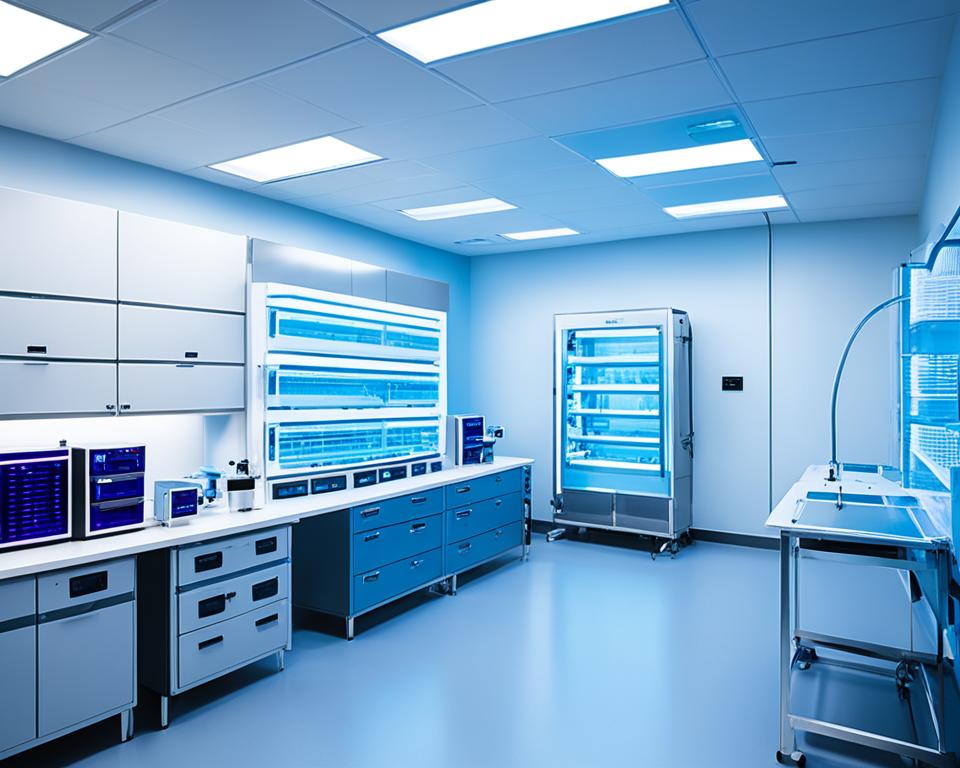
Air purification systems play a crucial role in maintaining clean and healthy indoor environments, especially in spaces where airborne pathogens, allergens, and odors are a concern. Ultraviolet radiation, with its powerful disinfecting properties, has emerged as a highly effective tool in these systems.
Ultraviolet radiation, commonly referred to as UV light, is a form of electromagnetic radiation that falls outside the visible spectrum. This invisible light has the ability to penetrate and damage the DNA and RNA of microorganisms, rendering them unable to reproduce and causing their deactivation.
When integrated into air purification systems, UV light acts as a powerful germicide, effectively eliminating various harmful contaminants from the air. It is particularly efficient in neutralizing viruses, bacteria, and mold spores, contributing to improved indoor air quality and reducing the risk of respiratory infections.
Furthermore, UV light has the capability to break down volatile organic compounds (VOCs) and eliminate unpleasant odors. This makes it an excellent solution for spaces with persistent or recurring odor issues, such as kitchens, bathrooms, and garbage areas.
To maximize the efficiency of air purification systems, UV lights are strategically positioned within the system’s filters or ductwork, ensuring that the air is thoroughly disinfected before being released back into the surroundings.
Advantages of Ultraviolet Radiation in Air Purification:
- Eliminates airborne pathogens, allergens, and odors
- Improves indoor air quality
- Reduces the risk of respiratory infections
- Breaks down volatile organic compounds (VOCs)
- Enhances overall cleanliness and freshness
In conclusion, the integration of ultraviolet radiation in air purification systems offers a highly effective and efficient method to ensure clean and healthy indoor environments. By harnessing the power of UV light, these systems can effectively neutralize pathogens, allergens, and odors, promoting the well-being of occupants and creating a more pleasant living or working environment.
Ultraviolet Radiation in Photovoltaics

When it comes to solar energy generation, ultraviolet (UV) radiation plays a significant role in the development and efficiency of photovoltaic devices, such as solar panels. While visible light is the primary source of energy for solar panels, UV radiation also contributes to the overall energy output.
UV radiation has a shorter wavelength than visible light, allowing it to carry higher energy levels. This high energy can be harnessed and converted into electricity by the photovoltaic cells within solar panels.
By capturing UV radiation, solar panels can maximize the energy conversion process and generate more electricity. This is particularly advantageous in regions with high UV exposure, as it enables solar panels to produce power even on cloudy days when visible light is limited.
The use of UV radiation in photovoltaics is continually being researched and optimized to enhance solar panel efficiency. Scientists and engineers are exploring innovative materials and designs that can effectively capture and convert UV rays into usable energy.
Advancements and Potential:
Recent advancements in photovoltaic technology have focused on enhancing UV absorption within solar panels. By increasing UV capture, more energy can be harvested from the solar spectrum, leading to higher solar energy yields.
The research team at SolarTech Innovations is currently developing a cutting-edge solar panel design that incorporates advanced materials capable of harnessing a broader range of UV radiation. This breakthrough technology aims to increase the power output of solar panels by up to 15%, making solar energy even more cost-effective and accessible.
Furthermore, the potential of UV-based photovoltaics extends beyond traditional solar panels. Emerging technologies, such as UV-sensitive organic solar cells, hold promise for flexible and lightweight solar power generation. These innovative solutions have the potential to revolutionize the solar energy industry, making renewable power sources more efficient and versatile.
| Advantages of UV Radiation in Photovoltaics: | Challenges & Limitations: |
|---|---|
|
|
The integration of UV radiation in photovoltaics holds promise for the advancement of solar energy technology. As scientists and engineers continue to refine UV-absorbing materials and optimize solar panel designs, the efficiency and effectiveness of solar power generation will continue to improve, driving the widespread adoption of renewable energy sources.
Ultraviolet Radiation in Forensics
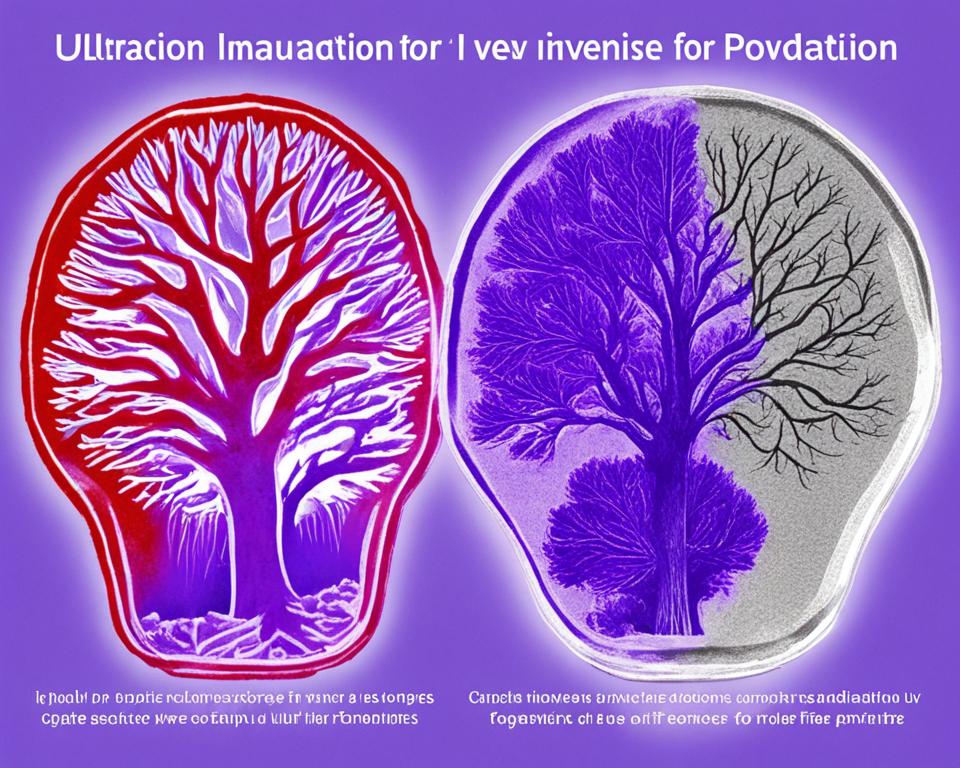
Forensic investigations heavily rely on cutting-edge technologies to unravel the truth and provide justice. One such technology is the use of ultraviolet (UV) radiation, which plays a crucial role in crime scene analysis, detection of bodily fluids, and examination of counterfeit documents.
Crime Scene Analysis: Ultraviolet radiation is used to reveal hidden evidence that is not visible under normal light. By illuminating a crime scene with UV light, forensic investigators can identify bloodstains, fingerprints, and other trace evidence that might have been missed otherwise. This technique greatly enhances the chances of collecting crucial evidence to solve complex criminal cases.
Detection of Bodily Fluids: UV light can be instrumental in detecting bodily fluids such as semen, saliva, and urine. These fluids fluoresce under UV radiation, emitting a distinct glow that helps forensic experts trace the presence of the fluids on various surfaces. This aids in linking suspects to the crime scene and provides critical evidence for investigations.
Examination of Counterfeit Documents: Counterfeit documents pose a significant threat in various fields, including finance, immigration, and national security. UV radiation assists in identifying forged or altered documents by revealing hidden security features that are only visible under UV light. These features can include UV-reactive inks, watermarks, or concealed images that remain concealed under normal lighting conditions.
Forensic experts rely on UV radiation to uncover hidden evidence, detect bodily fluids, and expose counterfeit documents, playing a crucial role in solving criminal cases.
The application of UV radiation in forensics has revolutionized the way investigations are conducted. It offers invaluable insights and helps uncover critical evidence that otherwise might go unnoticed. By harnessing the power of UV technology, forensic experts can enhance their capabilities and contribute to solving complex criminal cases, ensuring justice is served.
The Role of UV Radiation in Forensic Investigations
UV radiation serves multiple purposes in forensic investigations, as shown in the following examples:
- Revealing hidden evidence at crime scenes
- Detecting bodily fluids for DNA analysis
- Identifying counterfeit documents
To showcase the effectiveness of UV radiation in forensics, let’s take a closer look at a comparative table highlighting its advantages:
| Traditional Investigation Methods | UV Radiation in Forensics |
|---|---|
| Limited visibility of trace evidence | Enhanced detection of hidden evidence |
| Reliance on visible stains and prints | Identification of invisible bodily fluids |
| No capability to detect hidden features | Identification of UV-reactive security features |
This table clearly demonstrates how the adoption of UV radiation in forensics offers a significant advantage over traditional investigation methods. By leveraging UV technology, forensic investigators can unlock hidden clues and obtain critical evidence in criminal cases.
The Future of UV Technology in Forensics
As technology continues to advance, UV radiation is poised to play an even more significant role in forensic investigations. Innovations in UV light sources, imaging techniques, and spectral analysis are opening new possibilities for crime scene analysis, biological sample detection, and the identification of sophisticated counterfeit documents.
In addition, the integration of UV technology with other forensic techniques, such as DNA analysis and fingerprint identification, holds great potential for further advancements in the field. These interdisciplinary approaches enable forensic experts to leverage the strengths of different methods and enhance the overall accuracy of their investigations.
By embracing the opportunities offered by UV radiation and continuously pushing the boundaries of forensic science, investigators can stay one step ahead in the relentless pursuit of truth and justice.
Ultraviolet Radiation in Art and Conservation

Ultraviolet radiation plays a crucial role in the field of art restoration and conservation. By harnessing the power of UV technology, experts are able to uncover hidden artistic elements, analyze pigments, and identify signs of aging or forgery in precious artworks.
When examining artworks under ultraviolet light, certain materials, such as varnishes or overpaintings, can become fluorescent, revealing previously concealed layers or modifications. This technique allows conservators to gain deeper insights into an artwork’s history and make informed decisions about preservation and restoration methods.
Another application of ultraviolet radiation in art conservation is the analysis of pigments. UV light can induce fluorescence in certain pigments, providing valuable information about their composition and authenticity. This helps experts differentiate between original materials and later additions or repairs, ensuring the integrity of the artwork.
By utilizing ultraviolet radiation, conservationists are able to uncover hidden artistic elements, analyze pigments, and identify signs of aging or forgery in artworks.”
Beyond its use in identifying hidden details and analyzing pigments, ultraviolet radiation also aids in the assessment of an artwork’s condition. UV light can reveal degradation and damage that may not be visible to the naked eye. This information allows conservators to develop appropriate conservation strategies and prevent further deterioration.
In the world of art authentication, ultraviolet radiation serves as a valuable tool in detecting signs of forgery. By carefully examining an artwork under UV light, suspicious alterations or touch-ups can be revealed. This helps to safeguard against fraudulent practices in the art market.
With the power of ultraviolet radiation, art restoration and conservation efforts are enhanced, allowing for the preservation and understanding of our rich cultural heritage.
| Benefit | Application |
|---|---|
| Revealing hidden details | Uncovering concealed layers, modifications, and varnishes |
| Analysis of pigments | Identifying composition, authenticity, and alterations in pigments |
| Assessing artwork condition | Identifying degradation and damage invisible to the naked eye |
| Forgery detection | Revealing suspicious alterations and touch-ups |
Conclusion
Throughout this article, we have explored the wide range of uses and applications of ultraviolet (UV) radiation in various fields. From medicine and sanitation to food processing and industrial applications, UV technology has proven to be a versatile tool with significant benefits.
In the realm of medicine, UV radiation plays a crucial role in phototherapy treatments for skin conditions, sterilizing medical equipment, and ensuring clean air and water in healthcare settings. Its ability to eliminate pathogens and improve hygiene practices makes it an invaluable asset in promoting public health and preventing the spread of diseases.
Moreover, UV radiation finds application in food processing, where it effectively disinfects surfaces, extends shelf life, and reduces the risk of contaminants in food production facilities. In industrial processes, UV radiation contributes to the curing of adhesives, coatings, and inks, improving manufacturing efficiency and enhancing product quality.
UV radiation also plays a vital role in water treatment systems, where it disinfects water by inactivating microorganisms and controls algae growth. In air purification systems, UV radiation eliminates airborne pathogens, allergens, and odors, ensuring clean and fresh indoor environments. Additionally, UV radiation is utilized in various fields such as photovoltaics, forensics, and art conservation, enhancing solar energy generation, aiding forensic investigations, and preserving and restoring artworks.
By harnessing the potential of UV technology, we can continue to improve various aspects of our lives, from healthcare and sanitation to energy generation and artistic preservation. With its versatility and effectiveness, UV radiation stands as a valuable tool for a wide array of applications, making our world safer, cleaner, and more sustainable.
FAQ
What are the uses of ultraviolet radiation?
Ultraviolet radiation has various uses in different fields such as medicine, sanitation, food processing, industrial applications, water treatment, air purification, photovoltaics, forensics, and art conservation.
How is ultraviolet radiation utilized in medical treatments?
Ultraviolet radiation is used in medical treatments for phototherapy of skin conditions, sterilization of medical equipment, and disinfection of air and water in healthcare settings.
How is ultraviolet radiation employed in sanitation and public health practices?
Ultraviolet radiation is utilized in sanitation practices for water treatment, air purification, and sterilization of surfaces in public spaces to promote public health and prevent the spread of diseases.
In what ways is ultraviolet radiation used in food processing and preservation?
Ultraviolet radiation is used in food processing to disinfect food surfaces, extend shelf life, and reduce the risk of contamination in food production facilities.
How is ultraviolet radiation applied in industrial processes?
Ultraviolet radiation is used in various industrial applications, including curing adhesives, coatings, and inks, to improve manufacturing efficiency and product quality.
How is ultraviolet radiation utilized in water treatment systems?
Ultraviolet radiation is used in water treatment to disinfect water by inactivating microorganisms, control algae growth, and reduce chemical byproducts.
How is ultraviolet radiation employed in air purification systems?
Ultraviolet radiation is used in air purification systems to eliminate airborne pathogens, allergens, and odors, thereby maintaining clean and healthy indoor environments.
How does ultraviolet radiation contribute to the development of photovoltaic devices?
Ultraviolet radiation plays a role in the development of photovoltaic devices, such as solar panels, and impacts solar energy generation by harnessing more energy from the UV spectrum.
How is ultraviolet radiation used in forensic investigations?
Ultraviolet radiation is used in forensic investigations for crime scene analysis, detection of bodily fluids, and examination of counterfeit documents, aiding in solving criminal cases.
How is ultraviolet radiation utilized in art restoration and conservation?
Ultraviolet radiation is used in art restoration and conservation to detect hidden artistic elements, analyze pigments, and identify signs of aging or forgery in artworks.

